We continue our tour through the city to search the most iconic fountains.
At Columbus Circle, one of the world’s most famous roundabouts, a 13-foot tall figure of Christopher Columbus stands atop a 35-foot column overlooking Central Park West, and an allegorical figure depicting the Genius of Discovery stands on the base. The base of the monument is surrounded by fountains designed by Douglas Leigh, who was inspired by water displays in Rome. The fountains were a gift from the Delacorte Foundation and were dedicated on Columbus Day, October 12, 1965.
This circular fountain contains a striking 50-foot-tall abstract granite sculpture, which was commissioned as the centerpiece for Foley Square, near where about 10,000 slaves were interred at a graveyard up until 1794. The sculpture is inspired by antelope headdresses of the Bamana people of Mali, and sits in an elongated boat-like structure that symbolizes canoes used by Native Americans, as well as the “middle passage”—the journey of enslaved Africans across the Atlantic Ocean to the Americas. The granite base contains a replica of the inherited lock and key used to enslave the artist’s great-great grandfather Steve Pace.
This fountain, cast in 1872, first stood in a tourist area in Como, Italy. But after much criticism for its nude figures, worries about the effects on the city’s water supply, and a financial crisis, the fountain was put on sale for 3,500 lira (about $637 then). In 1902, William Rockefeller purchased the fountain and invested an additional $25,000 to bring it to New York City, where it was installed at the Bronx Zoo in 1903. In 1968 it was designated an official New York City landmark.
Only steps from Central Park’s southeast end, the Pulitzer Fountain stands among the callery pear trees that bloom every spring. The 22-foot-tall fountain features a bronze allegorical figure of Pomona, the goddess of abundance, who is seen holding a basket of fruit. It was donated by publisher Joseph Pulitzer (1847-1911), for whom the Pulitzer Prize is named.
In the winter, if you want to know just how cold New York City is, come to Bryant Park and check out the Josephine Shaw Lowell Fountain. It is a sight to see year-round, but especially once frozen! The fountain has a 32-foot wide lower basin and a 13-foot wide upper basin. It honors Josephine Shaw Lowell (1843-1905), who established the New York Consumers League, was the first member of the New York State Board of Charities, and was a well-known advocate for Progressive reform. The Memorial Committee wanted the fountain placed in Corlears Hook Park where Shaw focused her energies, instead the fountain was installed in Bryant Park in 1913.
This fountain in the Conservatory Garden’s North Garden is perhaps the most iconic of the garden’s three fountains. It is admired for its playful depiction of three dancing girls against the backdrop of the gardens blooming flowers. The sculpture is a cast of the original; it was donated to the park from Samuel Untermeyer’s estate. Untermeyer (1858-1940) was a well-known American lawyer and civic leader who focused on corporate law, income tax laws, and labor relations.
This fountain in Central Park’s Conservatory Garden honors “The Secret Garden” (1910) author Eliza Hodgson Burnett (1849 – 1924). The bronze statue, of a girl holding a bowl and a boy playing a flute beside her, is based on the book’s main characters Mary and Dickon. The fountain was sculpted by acclaimed sculptor Bessie Potter Vonnoh and was completed just in time for the garden’s official opening in the fall of 1937.
The Fountain of The Dolphins playfully graces the Franklin D. Roosevelt Boardwalk and Beach in Staten Island. The fountain was donated to the park from the Staten Island Borough Office in 1998 and honors former Deputy Borough President James P. Molinaro for his efforts in restoring South Beach. It contains six bronze dolphin figures, wave-shaped rails, and water jets that light up with green, blue and white lights at night.
After the construction of the Macombs Dam Bridge and 155th Street Viaduct at the end of the nineteenth century, marshland on the Bronx side of the Harlem River was filled in order to formthe Macombs Dam Park. The Macombs Dam Fountain was originally located in this park at Jerome Avenue and 162nd Street. Dedicated in 1908, the fountain was designed by Marin Schenck and Arthur G. Waldreaon with a large front basin, decorative waterspouts, and a small rear drinking fountain. Around 1930, Macombs Dam Park was reconfigured due to the construction of a new approach to the Macombs Dam Bridge, and the fountain was moved to the center of the new triangular-shaped park.
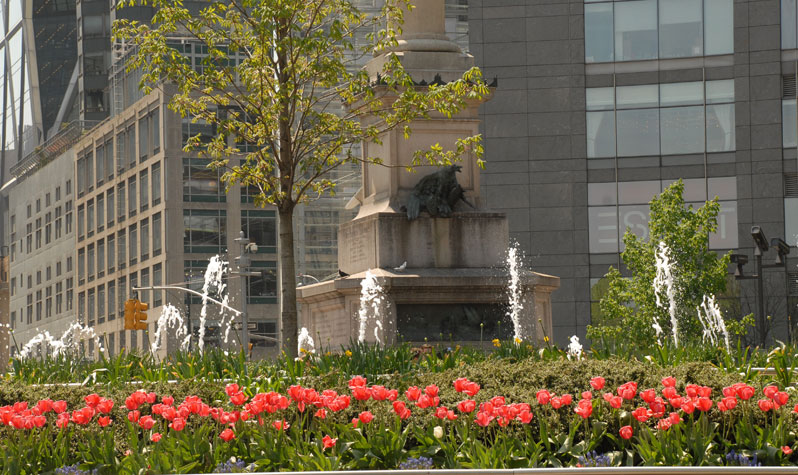
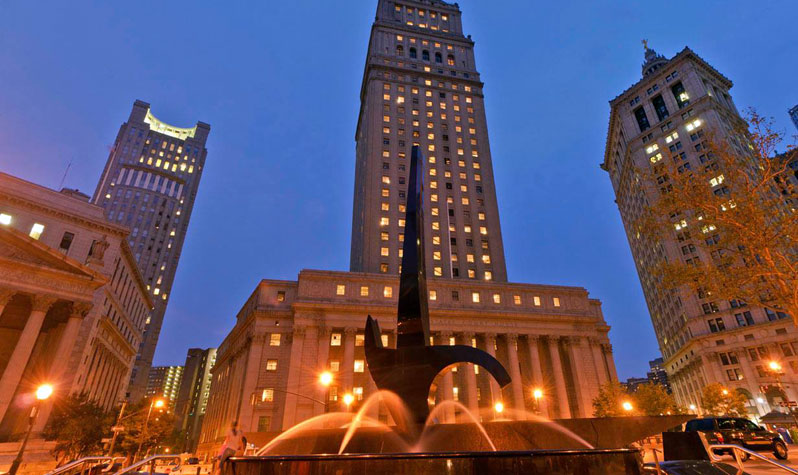
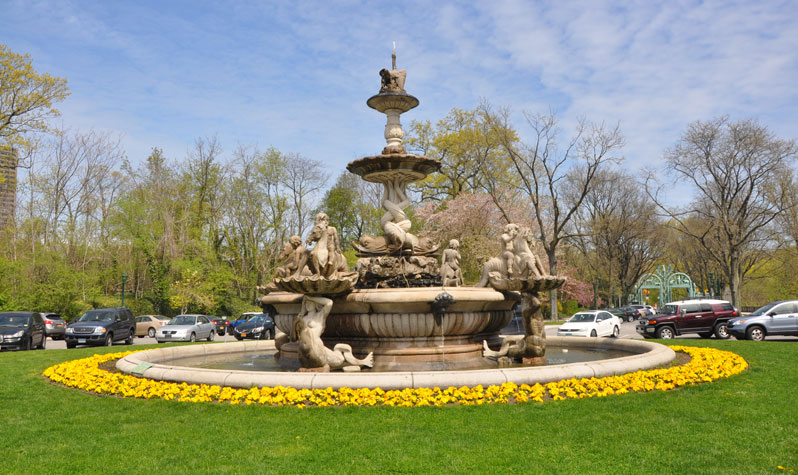
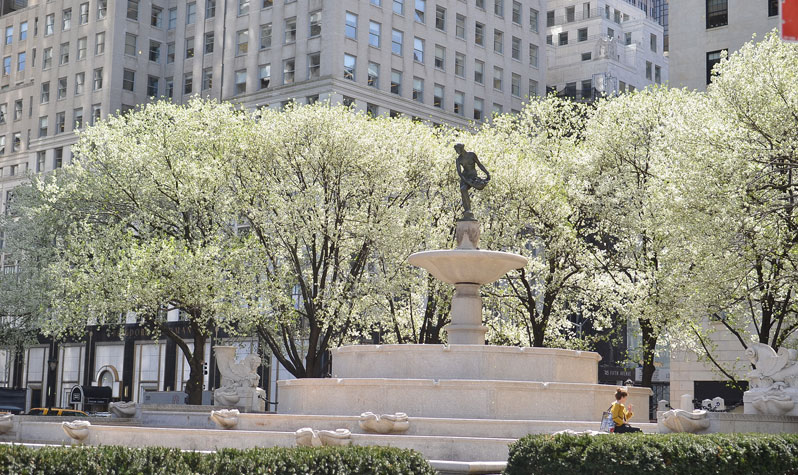
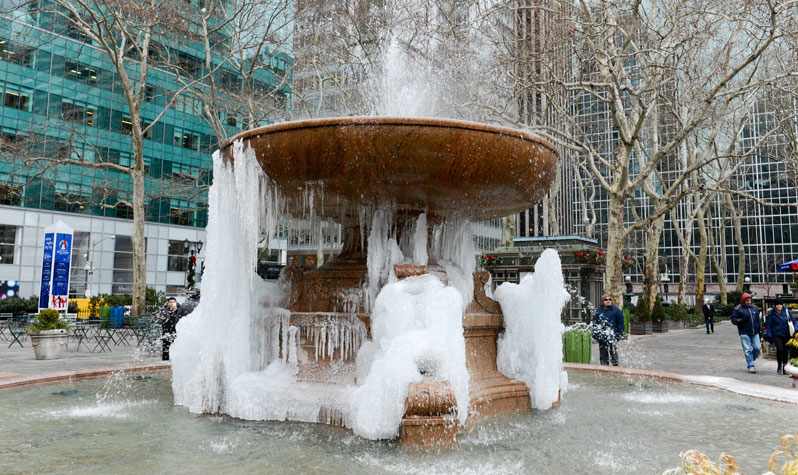
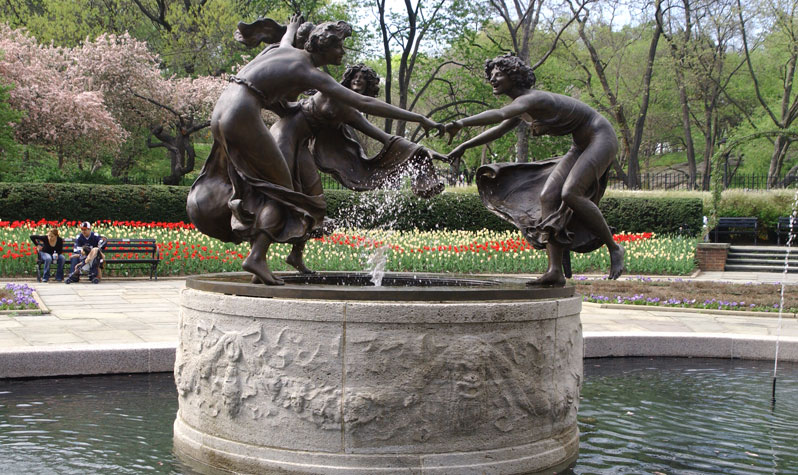
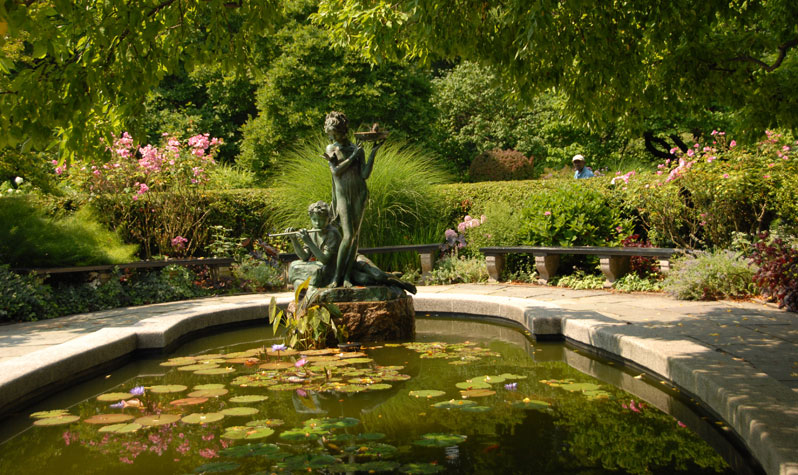
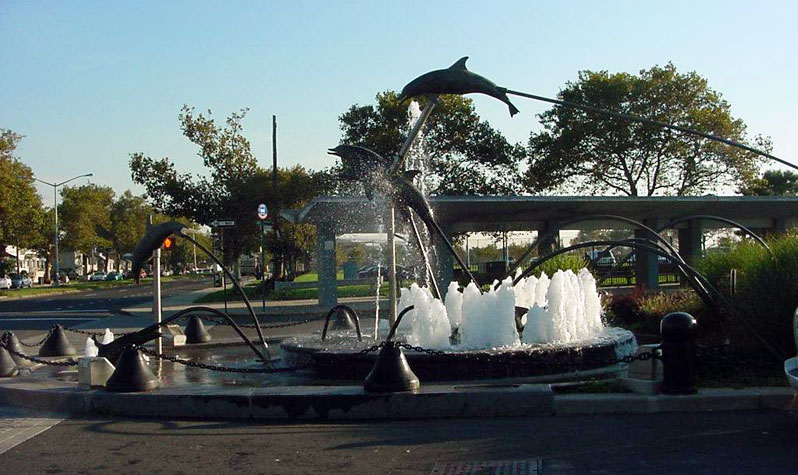
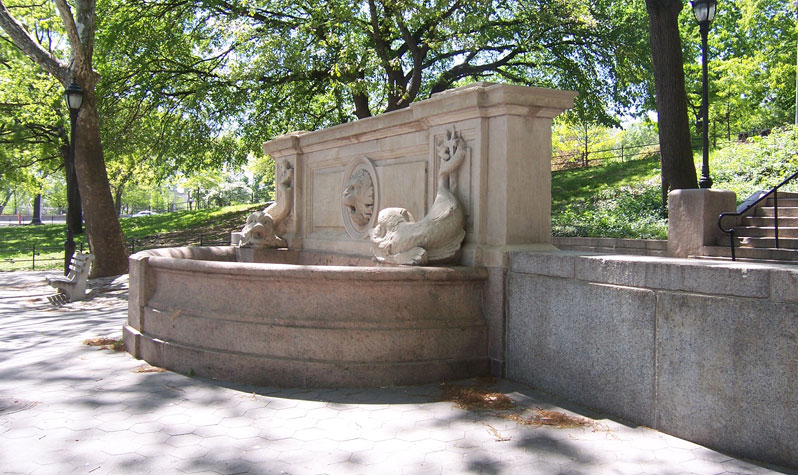
Comentarios
Publicar un comentario